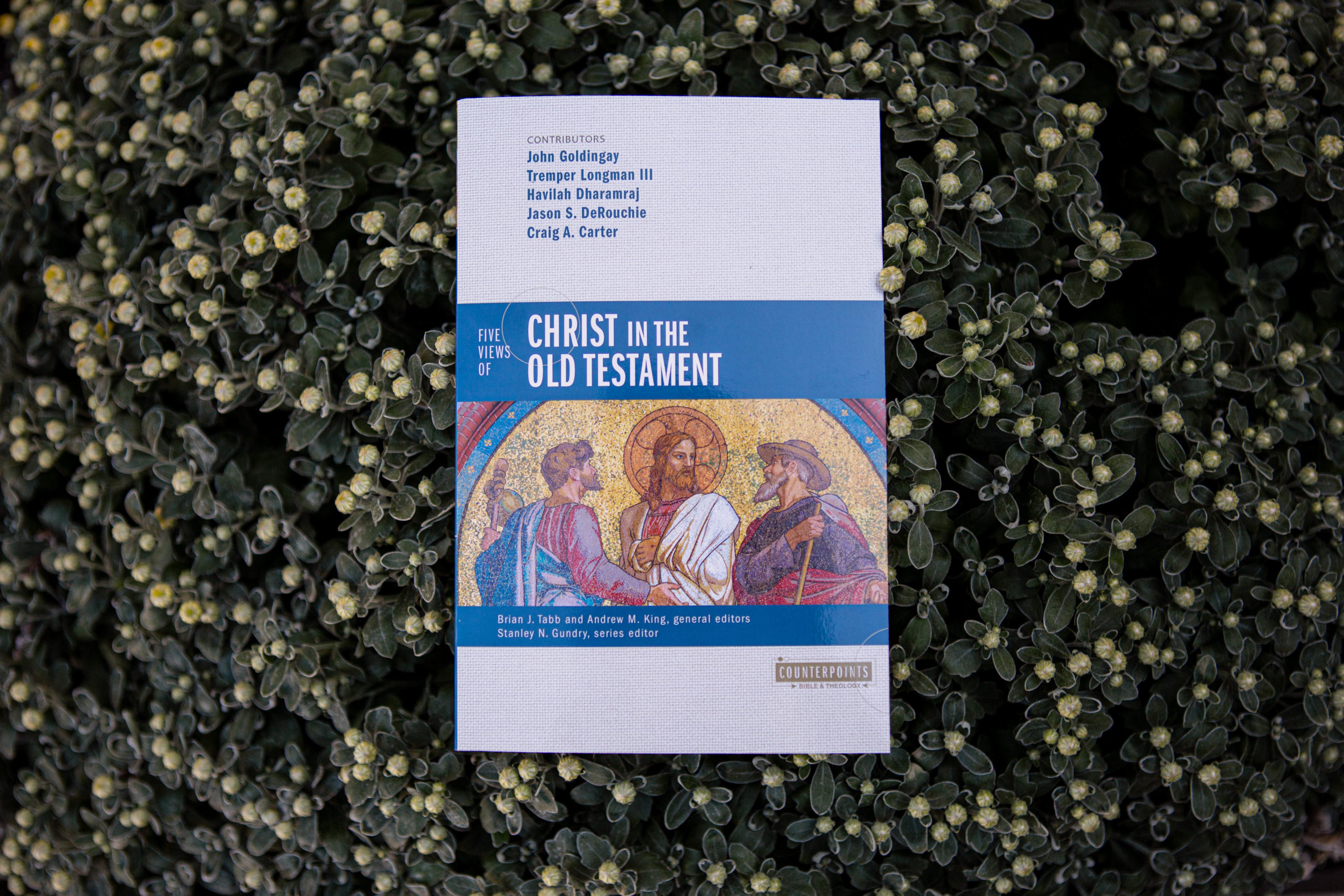
An Interview with Andrew M. King and Jason S. DeRouchie
Andrew M. King serves as Assistant Professor of Biblical Studies at Midwestern Seminary and Spurgeon College and Assistant Dean of Spurgeon College. Jason S. DeRouchie serves as Research Professor of Old Testament and Biblical Theology at Midwestern Seminary and Spurgeon College. Their latest book, Five Views of Christ in the Old Testament, explores five different approaches on how the Old Testament points to Christ. King served as an editor for the publication and DeRouchie contributed one of the five views.
In the book, views and contributors include:
- The First Testament Priority View, John Goldingay
- The Christotelic View, Tremper Longman III
- The Redemptive-Historical Christocentric View, Jason S. DeRouchie
- The Reception-Centered Intertextual View, Havilah Dharamraj
- The Premodern View, Craig Carter
They both joined me to answer a few questions about their book and the importance of Christ in the Old Testament.
BF: What inspired you and your fellow editor Brian J. Tabb to initiate this new book Five Views of Christ in the Old Testament? How did you narrow down the contributors for this publication?
AK: I attended a session at the Evangelical Theological Society in 2019 on the topic of Christ in the Old Testament. Dr. DeRouchie was a presenter alongside other Old Testament scholars. There was standing room only, as attendees eagerly heard different perspectives on this question. I thought about how to bring this important conversation to a broader Christian audience. Dr. DeRouchie connected me with Dr. Tabb and we submitted a proposal to the publisher. We sought to find scholars who represented different approaches. We assembled a long list of potential contributors for the major views out there and worked with Zondervan to find the best fit.
In the book, you had the opportunity to engage with four differing views on Christ in the Old Testament. What was the experience like to interact with scholars on this topic in a publication like this?
JD: Faithful study includes observing carefully, understanding rightly, and evaluating fairly. All three of these habits of heart and mind were tested in this exchange of perspectives, and the topic required me to work very hard in the strength God supplied to accurately represent and critique my counterparts in humble and accurate ways that remained true to what I believe the Bible teaches. The interaction also forced me to critique and refine my own approach and presentation and to trust the Lord to guide readers in their own evaluations.
Why is this topic of Christ in the Old Testament so important for Christians today?
AK: The question of seeing the relationship of Jesus to the Old Testament is fundamentally about how we understand the nature of Scripture and how the two Testaments of our Bible fit together. As a people of the Book, Christians desire to read their Bible’s well. Through seeing seasoned scholars wrestle with the biblical text with an eye towards Christ, readers can grow in their own interpretive skills. We desire to be more faithful in our interpretation so we can worship rightly and be on mission fruitfully. On the road to Emmaus, Jesus called the men he spoke with “foolish and slow of heart” for failing to see how the Old Testament bore witness to him. Our hope is that this volume, in part, will help believers today avoid a similar rebuke.
You defend the redemptive-historical Christocentric approach in the book. Can you give us a preview of your chapter by briefly explaining the heart behind the redemptive-historical Christocentric approach?
JD: An approach that is redemptive-historical is one that accounts for how God’s work and purposes in Scripture progress, integrate, and climax in Christ, and how all faithful biblical interpretation must account for the way Jesus’s life, death, and resurrection inform and influence everything God is doing in space and time (Luke 16:16; Gal 3:23–26). Through Jesus God discloses mysteries (Mark 4:10; Rom 16:25–26), allows shadows to reach their substance (Col 2:16–17), and inaugurates a new creation (2 Cor 5:17; Gal 6:15), new covenant (Luke 22:20; Heb 9:15), and new law (1 Cor 9:21; Gal 6:2). A redemptive-historical approach requires that we consider every text in view of its close, continuing, and complete contexts within Scripture as a whole to fully discern what God meant in any passage.
By Christocentric I mean that all we do and teach is in some way tied to the cross (1 Cor. 2:2). Indeed, we need to interpret Scripture through Christ and for Christ. To interpret through Christ means that we start our reading as those believing in Jesus, with God having awakened our spiritual senses to see and hear rightly (1 Cor 2:14; 2 Cor 3:14). To interpret for Christ means that we recognize that that Old Testament history (Mark 1:14), prophecy (Acts 3:18), law (Rom 10:4), and promises (2 Cor 1:20) point to Jesus, that he fulfills all of them (Matt 5:17–18), and that the Spirit who inspired the biblical text is working to glorify the Son through it all (John 16:13–14; cf. 1 Pet 1:11). Christian biblical interpretation reaches its end only after we have beheld Jesus’s glory and found him transforming us into his image (2 Cor 3:18).
What do you hope readers will take from this book?
AK: We have designed this book to allow each contributor to “put their cards on the table.” Every essay unpacks the presuppositions necessary for the view, the specific steps readers must take to follow the approach presented, and three case studies from different genres of Scripture. In all of this, readers can see the process of each view from start to finish. The critiques of each view from the other contributors raise important objections that readers can evaluate. Our hope is that by the end of the book, readers will not simply align with a particular view, but have a robust toolkit for their own study of Scripture. We hope this book will help believers do their personal devotions more faithfully, preach and teach more boldly, and exalt our Triune God globally.
What encouragement would you give to readers as they pick up this book?
JD: Readers must be very discerning with their Bible’s open as they consider the multiple views in this volume. The book’s format may suggest that any of these perspectives are viable options for Christians, but readers should not assume this from the start. The discerning reader will ask questions like:
- Is this scholar approaching Scripture as God’s unified Word (2 Tim 3:16) and allowing Scripture’s claims in both the Old and New Testaments to stand?
- Does this proposal require biblical warrant for the way it presents seeing Christ in the Old Testament?
- Does the view allow Christians to try “to convince” others “about Jesus from the Law of Moses and from the Prophets” (Acts 28:23)?
- Do the claims affirm with Jesus that “the Scriptures … bear witness about me” (John 5:39), that “Abraham rejoiced that he would see my day” (8:56), and that Moses indeed “wrote of me” (5:46)?
- Does this perspective agree with the apostles that (a) Isaiah spoke as he did “because he saw [Jesus’s] glory and spoke of him” (12:41), (b) “what God foretold by the mouth of all his prophets, that his Christ would suffer, he thus fulfilled” (Acts 3:18; cf. 10:43), (c) “the gospel of God … concerning his Son” was “promised beforehand through his prophets in the holy Scriptures” (Rom 1:1–3), (d) “it was revealed to [those prophets] that they were serving not themselves but you” (1 Pet 1:12), (e) the meaning of Scripture’s “spiritual truths” can only be “spiritually discerned” by “those who are spiritual” (1 Cor 2:13–14), and (f) “only through Christ” are minds softened to “read the old covenant” in a way that lets us “behold the glory of the Lord” so that we are in turn “transformed” into his image (2 Cor 3:14, 18)?
Editor’s Note: Five Views of Christ in the Old Testament is now available for purchase.

